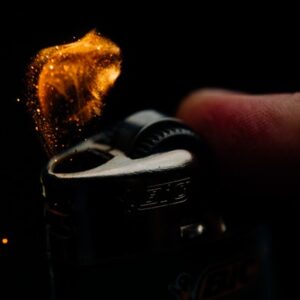Firewood – How Wood Burns

Combustion
In any wood burning device, combustion (fire) changes wood into heat, chemicals, and gases. Hydrogen and carbon in the wood mix with oxygen in the air when wood burns. Complete combustion or burning produces water vapor, carbon dioxide, heat, and noncombustible ash. When incomplete combustion occurs, carbon monoxide, hydrocarbons, and other gases are formed.
Three Steps of Burning
Wood burning involves three steps. First, moisture in the wood evaporates as the wood burns. Second, volatile matter is driven off as gases. Finally, the fixed carbon in the wood burns. However, all three steps or phases may be going on at the same time. For example, all three phases occur when you add more wood to a glowing fire. The first phase of combustion heats the wood to evaporate and drive off the moisture. The heat required to get rid of the moisture in the wood does not warm the stove or the room.
The second phase of combustion begins when the wood reaches a temperature of about 500 F. Then the wood starts to break down chemically and volatile matter is vaporized. When these gases reach about 1,100 F, and mix with the right amount of air, they burst into flames and burn. If the temperature of the volatile gases is not maintained about 1,100 F, or there is not enough air, the wood does not burn completely. A hot fire, then, is important for maximum efficiency in combustion. Combustion does not always reach 1,100 F in a stove, fireplace, or chimney. You can create a dangerous situation, though, if you add newspapers, or other highly combustible materials to a fire. The sudden flareup can raise the temperature in the chimney and ignite any buildup of creosote.
This second phase of combustion requires considerable oxygen. If air is only directed at or up through the burning fuel, most of the oxygen will be consumed, leaving none for the burning of gases. To burn gases, air must be directed around and over the burning fuel pile. The long, yellow flames leaping about the glowing fuel bed indicate burning gases. More than half of the available heat in wood comes from these burning gases.
The third stage of combustion is the burning of charcoal that remains after the release of volatile gases. The charcoal burns at temperatures exceeding 1,100 F. Finally, a small amount of ash remains after the charcoal is burned.
Meet the Author
Dr. Todd Shupe is the President of Wood Science Consulting, LLC. He is a well-recognized expert on wood forensics, wood preservation, wood decay and degradation, and wood species identification. He has a broad background in new product development, quality management, and marketing and sales in both the public and private sectors. For more information please visit DrToddShupe.com.
We welcome your comments below.
Thank you for visiting. We trust that you have enjoyed reading our articles.
Liked this post? Read more below or search for more topics . . .

